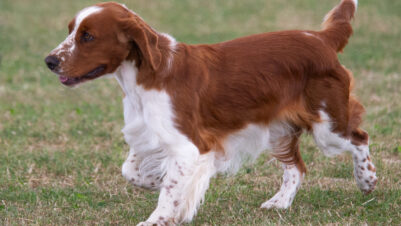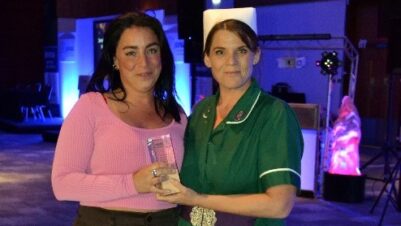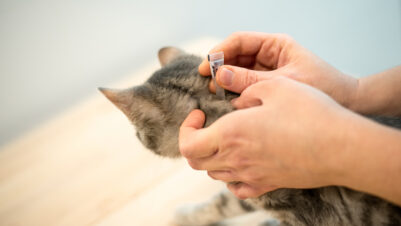Anyone who has lost a pet or animal companion knows the pain and emptiness we feel when they die. As we tend to live far longer than our animals, this is a pain that animal lovers will likely feel a number of times during our lives. So how can we send them off with a beautiful memorial of wildflowers?
David Holmes, founder of Ashes to Blooms commented: “During my childhood, we were very much an ‘animal household’. At one time or another, we had every imaginable pet, including Vietnamese pot-bellied pigs, stick insects, dogs, cats, horses, chickens, ducks, bantams, fish, rats, mice, gerbils, guinea pigs, rabbits and more.
“We had so many animals that we received visits from our school classes and local Guides groups, as well as countless friends. As naturally happens, our animals passed away, one by one, and generally took-up their final resting places in our family garden (save for the horses and pigs!). Many of these were left to rest peacefully, but a number were disturbed by foxes, or came back to light during garden re-landscaping.
“Whilst living in Hove in 2010, I decided that my flat and my life were missing something and I set about finding an animal companion. That summer I was lucky enough to come across a beautiful Netherland Dwarf rabbit, later to become known as Lucy. She came home with me that afternoon, and was the best companion for almost 12 years. Lucy lived free in my lounge, and made it entirely her own. We referred to it as “Lucy’s lounge“, as she was very much the boss of the domain.
“Lucy was full of love, enjoying head strokes and cuddles, as well as being feisty and endlessly naughty! When she decided it was time for strokes, Lucy would either (in her younger years) jump onto the sofa, or (in her later years), sit by the sofa and stare at me until I realised that my attention was required.
“By early 2022, Lucy was suffering from arthritis and on 27 January 2022, I made the heart-rending decision to have her put down. This was performed by my local veterinary practice, who had provided Lucy with great care during her life (including during periods of gut stasis), and this level of care continued until the end. I was with Lucy until the end, and was stroking her head (her favourite thing in the world), as she slipped away. After a few minutes of slight movement, Lucy was gone and no-longer in discomfort.
“The vet gave me a number of options for dealing with Lucy’s body, including taking her home with me, or sending her for group or individual cremation. I don’t have a garden to bury her in, and didn’t want her to be sat in a box on the mantelpiece for the rest of my life, which didn’t seem like a fitting end for a girl who was so full of life and naughtiness. And so, in the moment, and just wanting to get away from there, I opted for the group cremation.
“In the following weeks, I cleaned out Lucy’s cage and we took this, along with lots of her possessions, to a local animal rescue centre. As well as the grief, I also felt a lot of guilt for allowing Lucy to be sent for a group cremation. It made no difference to her, but I very much felt that I hadn’t given her the resting place that she deserved.
“Since then, out of curiosity, I have spent hours online, searching for alternative memorials to burial or cremation, as well as ways of making use of ashes. ‘Scatter tubes’ are one way to spread our loved ones’ ashes. There are also specialist planters, where the ashes and a plant can be added, and the plant grows from these. Ashes can be fused with glass to create unique pieces of art, or they can be added to a bespoke piece of jewellery, or even turned into a diamond. One company provides urns, in the shapes of various animals, as an artistic way of storing the ashes. I have also seen that one company can take the ashes and your animal’s lead or collar, and frame these along with a photograph of your loved one.
“There are some lovely options out there, but the trouble is that people are unlikely to know about the options until their loved one has gone, and risks making a bad decision, in the moment. I have also considered all the options and feel that none of them would have been right for ‘my Lucy’. I therefore founded Ashes to Blooms, to provide to other people, what I feel would have been a fitting tribute to Lucy, and a great way to put her to rest.
“Ashes to Blooms take the ashes of a loved one, whether a beloved person or a special animal, and combine them with a combination of UK native wildflower seeds and other natural ingredients to create bespoke seed balls. Customers can then give these to friends and family (or keep for themselves) to scatter in a special place, and watch their wildflower memorial grow. This is what I would have wanted for Lucy.
“As discussed, above, there is an endless, and increasing range of wonderful ideas out there for putting our beloved animals to rest. There is no one ‘right’ way to do it, but I hope that we have been able to offer grieving families another option for the final resting place of their loved one.
“As mentioned, above, our local vets provided Lucy with brilliant care, as most vets do. The thing that made our vets so special, were their absolute focus on doing whatever they could to make her better. During a spell of gut stasis, when Lucy was an in-patient, I had a phone call from a veterinary nurse, saying that they were going to the Co-Op to get Lucy some fruit and vegetables, and asking what Lucy’s favourites were.
“On another occasion, Lucy spent the day at the vet’s and came home to me that evening, and was to return for treatment the next day. When taking Lucy back on the second day, the veterinary nurse said that they’d held onto Lucy’s Recovery food from the day before, to save charging me for a new packet. I simply cannot overstate what a difference these kind acts make.”
David Holmes is the founder of Ashes to Blooms, a company based in Worthing, West Sussex, next to the South Downs National Park, specialising in making bespoke seed balls containing ashes, to create wildflower memorials.






